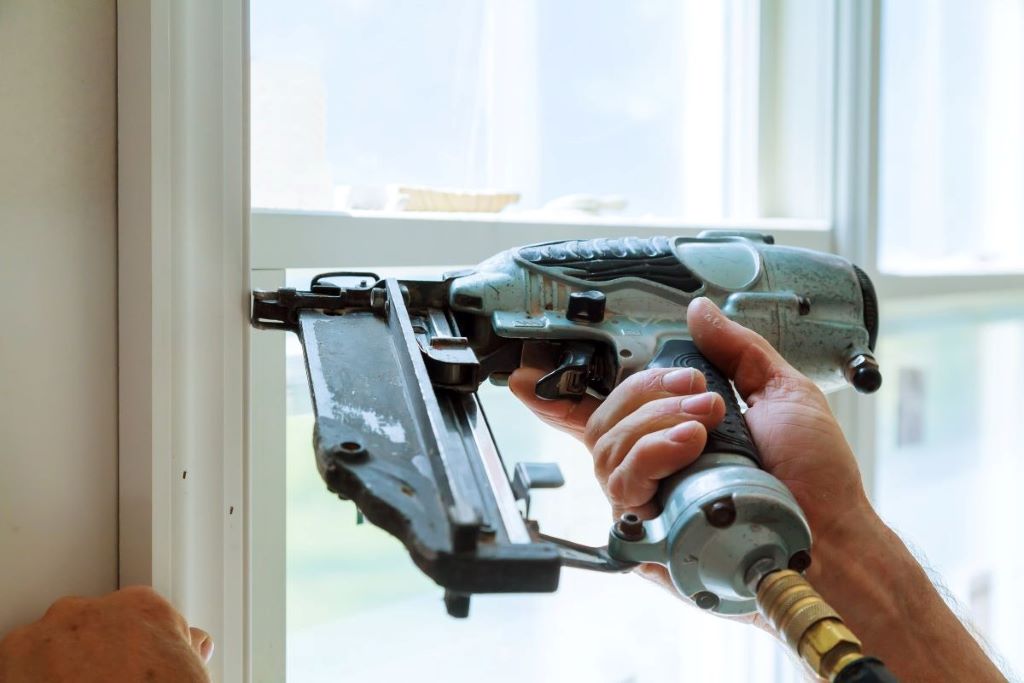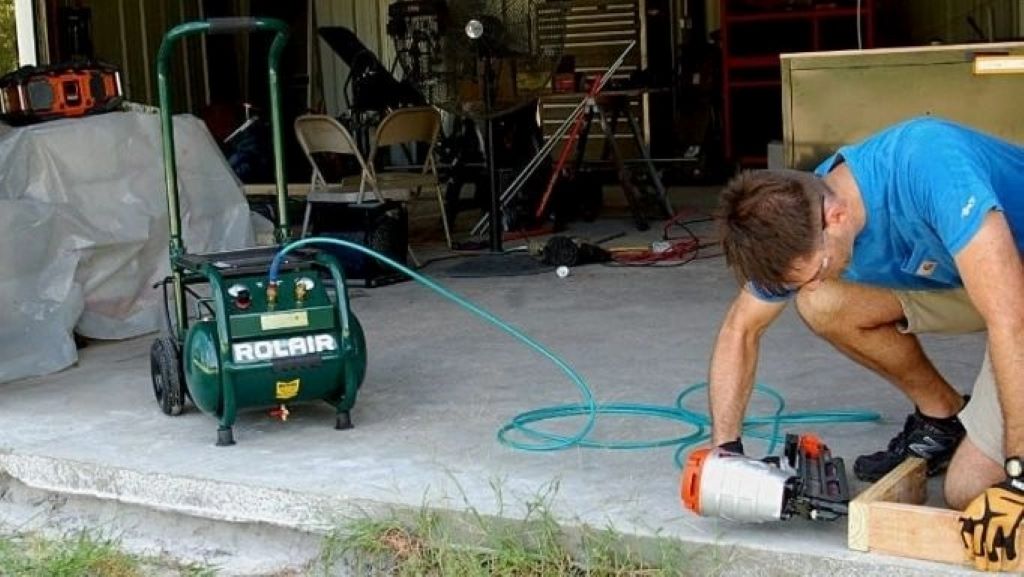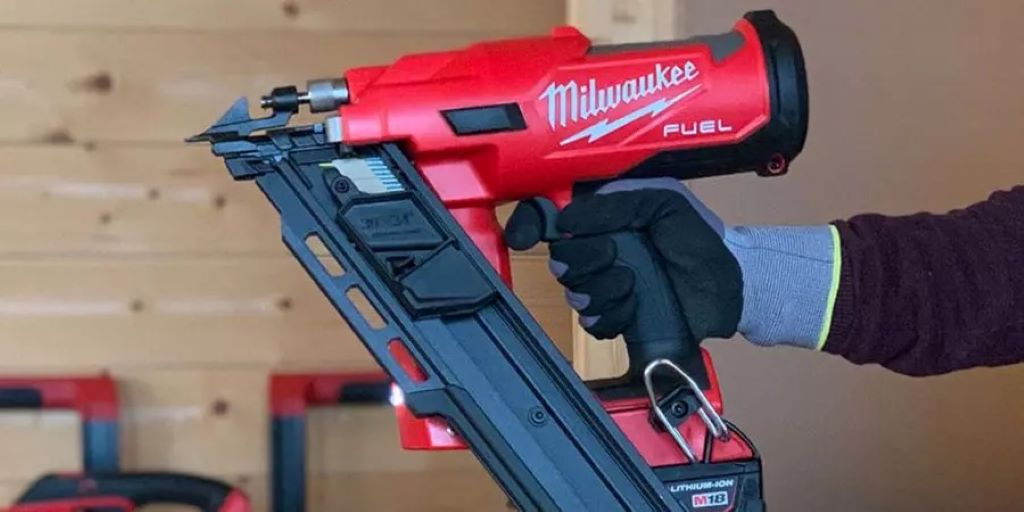Imagine this: you’re in the middle of a woodworking project, your nail gun is primed, but your air compressor sputters, leaving you stranded mid-task. Frustrating, right? Choosing the right air compressor for your nail gun can make or break your project’s efficiency and quality. Whether you’re a DIY enthusiast or a professional contractor, understanding how to pair these tools ensures seamless performance and professional results. In this guide, we’ll dive deep into selecting the perfect air compressor for your nail gun, covering key features, types, and practical tips to meet your needs.
Why You Need an Air Compressor for a Nail Gun
Nail guns, especially pneumatic ones, rely on compressed air to drive nails into materials with precision and force. An air compressor supplies this power, making it an essential companion for tasks like framing, roofing, or finish carpentry. But not all compressors are created equal. The wrong choice can lead to inconsistent performance, wasted time, or even tool damage. By understanding your nail gun’s requirements and matching them to the right compressor, you’ll save time, money, and frustration.
Key Terms to Know
Before we dive in, let’s clarify some terms:
- CFM (Cubic Feet per Minute): Measures the volume of air a compressor delivers. Nail guns require specific CFM ratings for optimal performance.
- PSI (Pounds per Square Inch): Indicates the pressure of the compressed air. Most nail guns operate between 70-120 PSI.
- Tank Size: Determines how much compressed air the compressor can store, affecting runtime and portability.
- Duty Cycle: The percentage of time a compressor can run before needing a break, crucial for continuous use.
Types of Air Compressors for Nail Guns
There are several types of air compressors, each suited to different tasks. Here’s a breakdown of the most common options for nail gun use:
-
Pancake Compressors
Pancake compressors are compact, lightweight, and ideal for small to medium projects. Their flat, round tank design makes them portable and stable. With tank sizes typically ranging from 1 to 6 gallons, they’re perfect for finish nailers and brad nailers used in trim work or furniture building.
Pros:
- Highly portable
- Affordable
- Sufficient for light to medium tasks
Cons:
- Limited tank capacity
- May struggle with heavy-duty framing nailers
-
Hot Dog Compressors
Named for their cylindrical tank shape, hot dog compressors offer slightly larger tank sizes (2-8 gallons) and higher CFM output. They’re versatile for both DIY and professional use, handling a range of nail guns, including roofing and siding nailers.
Pros:
- Balanced power and portability
- Suitable for multiple nail gun types
- Moderate price point
Cons:
- Heavier than pancake models
- May require more maintenance
-
Wheelbarrow Compressors
These dual-tank compressors are designed for heavy-duty tasks like framing or large-scale construction. With higher CFM and PSI ratings, they can power multiple nail guns simultaneously, making them ideal for job sites.
Pros:
- High air output for continuous use
- Supports multiple tools
- Durable for demanding environments
Cons:
- Bulky and less portable
- Higher cost
-
Portable Electric Compressors
For those prioritizing convenience, portable electric compressors are quiet, low-maintenance, and perfect for indoor use. They’re great for hobbyists using finish or brad nailers.
Pros:
- Quiet operation
- No oil maintenance
- Easy to use
Cons:
- Limited power for heavy-duty tasks
- Requires a power outlet
Matching Your Nail Gun to the Right Compressor
Different nail guns have unique air requirements. Here’s a quick guide to ensure compatibility:
- Brad Nailers: Used for delicate trim work, these require 0.3-0.5 CFM at 70-90 PSI. A small pancake compressor (1-2 gallons) is usually sufficient.
- Finish Nailers: Ideal for cabinetry and molding, they need 1-2 CFM at 90-100 PSI. A 2-6 gallon pancake or hot dog compressor works well.
- Framing Nailers: For heavy-duty tasks like building decks, these demand 2-4 CFM at 100-120 PSI. A hot dog or wheelbarrow compressor is recommended.
- Roofing Nailers: Requiring 3-4 CFM at 100-120 PSI, these need a robust compressor with a larger tank for continuous operation.

How to Calculate Your Needs
To choose the right compressor, check your nail gun’s manual for its CFM and PSI requirements. Then, select a compressor that delivers at least 1.5 times the required CFM to account for continuous use and efficiency. For example, if your framing nailer needs 2.5 CFM at 100 PSI, opt for a compressor with at least 3.75 CFM at 100 PSI.
Key Features to Look for in an Air Compressor
When shopping for an air compressor, consider these factors to ensure it meets your nail gun’s needs:
- CFM and PSI Ratings
Ensure the compressor’s CFM and PSI exceed your nail gun’s requirements. Most nail guns operate at 90 PSI, but a compressor capable of 100-150 PSI offers flexibility for other tools.
- Tank Size
Larger tanks (6+ gallons) are better for continuous use, while smaller tanks (1-2 gallons) suit short, intermittent tasks. For occasional DIY projects, a 2-4 gallon tank is often enough.
- Portability
If you move between job sites, prioritize lightweight models like pancake or portable electric compressors. For stationary use, larger models with higher capacity are fine.
- Noise Level
Compressors can be loud, with noise levels ranging from 60-90 dB. For indoor or residential use, look for models labeled “quiet” or “low-noise” (around 60-70 dB).
- Oil-Free vs. Oil-Lubricated
Oil-free compressors require less maintenance and are ideal for casual users. Oil-lubricated models are more durable for heavy use but need regular upkeep.
- Power Source
Electric compressors are convenient for indoor use but require a power outlet. Gas-powered models are better for outdoor or remote job sites but are noisier and less eco-friendly.
Top Tips for Using an Air Compressor with a Nail Gun
To maximize performance and longevity, follow these practical tips:
- Check Hoses and Fittings: Use high-quality, appropriately sized air hoses (1/4” or 3/8” diameter) to prevent air leaks. Ensure fittings are secure to maintain consistent pressure.
- Drain the Tank Regularly: Moisture can build up in the tank, causing rust or damage. Drain it after each use to prolong the compressor’s life.
- Use a Regulator: A pressure regulator helps fine-tune PSI to match your nail gun’s needs, preventing over-pressurization.
- Maintain Your Compressor: For oil-lubricated models, check oil levels regularly. Clean air filters to ensure optimal performance.
- Invest in Accessories: A quick-connect coupler simplifies tool changes, while an inline oiler keeps your nail gun lubricated for smoother operation.
Common Mistakes to Avoid
- Undersizing the Compressor: Choosing a compressor with insufficient CFM or tank size leads to frequent cycling and reduced efficiency.
- Ignoring Duty Cycle: Running a compressor beyond its duty cycle can cause overheating and premature wear.
- Neglecting Maintenance: Skipping regular upkeep, like draining the tank or changing oil, shortens the compressor’s lifespan.
- Using Incompatible Hoses: Low-quality or mismatched hoses can reduce air pressure and affect performance.
Recommended Air Compressors for Nail Guns
Here are three popular options to consider, based on different needs:
- Best for DIYers: Bostitch BTFP02012 6-Gallon Pancake Compressor
- CFM: 2.6 at 90 PSI
- Tank: 6 gallons
- Weight: 29 lbs
- Ideal for brad and finish nailers, lightweight and affordable.
- Best for Versatility: DeWalt DWFP55130 2.5-Gallon Hot Dog Compressor
- CFM: 3.0 at 90 PSI
- Tank: 2.5 gallons
- Weight: 36 lbs
- Quiet operation, great for finish and framing nailers.
- Best for Professionals: Makita MAC5200 5.2-Gallon Wheelbarrow Compressor
- CFM: 6.5 at 90 PSI
- Tank: 5.2 gallons
- Weight: 88 lbs
- High output for framing and roofing nailers, rugged design.
FAQs About Air Compressors for Nail Guns
Q: Can I use a small compressor for a framing nailer?
A: A small compressor (1-2 gallons) may work for occasional use but will struggle with continuous framing tasks due to limited CFM and tank size.
Q: How loud are air compressors?
A: Noise levels vary, but most range from 60-90 dB. Look for “quiet” models if noise is a concern.
Q: Do I need an oil-free compressor?
A: Oil-free compressors are low-maintenance and ideal for casual users. For heavy-duty use, oil-lubricated models offer better durability.
Conclusion: Power Your Nail Gun with Confidence
Choosing the right air compressor for your nail gun doesn’t have to be overwhelming. By matching your nail gun’s CFM and PSI requirements to a compressor’s output, considering tank size and portability, and prioritizing features like noise level and maintenance, you can find the perfect tool for your projects. Whether you’re tackling trim work or heavy-duty framing, the right compressor ensures smooth, efficient performance.
Ready to take your projects to the next level? Start by checking your nail gun’s specs and explore our recommended compressors. Share your favorite compressor or nail gun tips in the comments below, or reach out for personalized advice to power up your next project!
Read More:
Shop the Best Nail Guns Online




